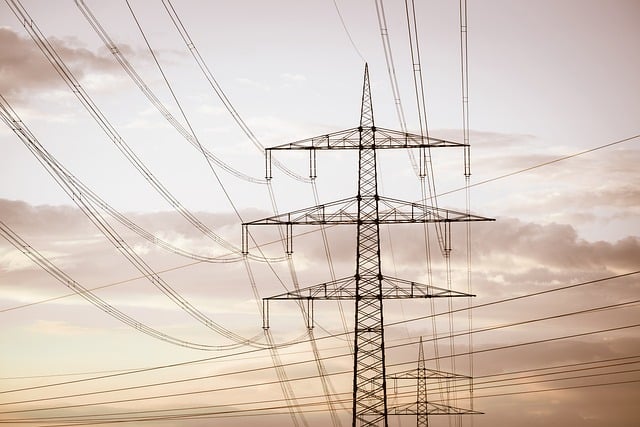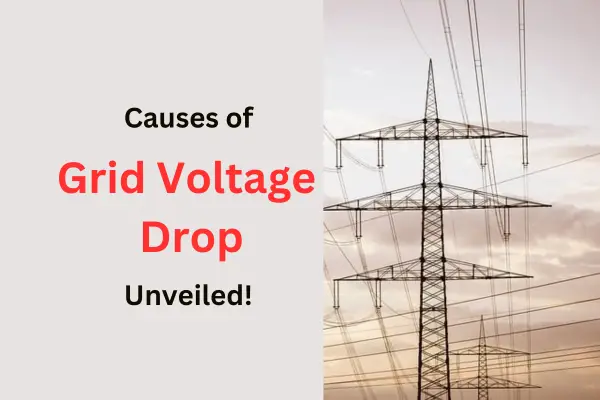In the tapestry of our daily lives, the electrical grid is the silent conductor orchestrating the symphony of modernity.
Yet, even this marvel is not immune to the subtleties of technical challenges, with voltage drop emerging as a pivotal concern.
In this exploration, we delve into the labyrinth of voltage drop, unraveling its intricacies and understanding the profound impacts it holds for our everyday power consumption.
Basics of Electrical Grid Operation

At its core, the electrical grid is a dynamic network designed to deliver electricity from power plants to end-users.
This journey involves multiple stages: electricity generation, transmission across vast power lines, and distribution to homes and industries. Each phase is critical, ensuring a continuous and stable power supply.
Understanding Voltage Drop
Voltage drop, a nuanced phenomenon, occurs when the electric current encounters resistance in its journey through conductors, leading to a reduction in voltage.
This isn’t merely a technical glitch; it directly influences the performance of our electronic devices and, on a larger scale, the reliability of the entire grid.
Factors Contributing to Voltage Drop
Resistance in Conductors:
Picture power lines as highways for electrons. As these charged particles navigate the conductor “roads,” they face inherent resistance, akin to a vehicle encountering friction on the road, resulting in a voltage drop as dictated by Ohm’s Law.
Distance and Length of Conductors:
The longer the distance an electric current must traverse, the greater the cumulative resistance, culminating in a substantial voltage drop. Think of it as the energy equivalent of a cross-country road trip, where each mile incurs a toll in the form of increased resistance.
For more information read my comprehensive article on my other site : How Distance Can Cause Voltage Drop
Conductor Size and Cross-Sectional Area:
In the realm of conductors, size matters. Larger wires with expansive cross-sectional areas offer less resistance, akin to widening a road to accommodate more traffic, ultimately minimizing voltage drop.
Load Variations:
Consider the grid as a dynamically evolving system. Sudden spikes in electricity demand, such as during peak hours or extreme weather conditions, can lead to a surge in load, momentarily causing a voltage drop akin to a traffic jam on the grid.
Transformer Impedance:
Transformers, while indispensable, introduce impedance into the system. This impedance, a subtle hurdle for electrons, contributes to a measurable voltage drop, requiring a delicate balance in the grid’s design and operation.
Temperature Effects:
The thermal characteristics of conductors play a role in resistance. Elevated temperatures augment resistance, comparable to a congested road during scorching heat, necessitating cooling mechanisms to mitigate voltage drop.
Other Influencing Factors:
Aging Infrastructure:
As our power infrastructure ages, the equipment within it experiences wear and tear. Older components introduce additional resistance, amplifying voltage drop. Regular and proactive maintenance becomes imperative to ensure optimal functionality.
Faults and Line Disturbances:
Unexpected events, from fallen branches to equipment malfunctions, can disturb the equilibrium of the power grid. Protective measures are in place to swiftly address these disturbances, minimizing their impact on voltage stability.
Regulation and Control Mechanisms:
Grid operators employ voltage regulators and control devices to maintain stability. However, these necessary measures also introduce a degree of resistance, contributing to voltage drops that demand a delicate balancing act.
Voltage Drop in Reactive Components:
Capacitors and inductors, vital components in power systems, introduce their own set of considerations. Their interaction with the grid’s dynamics necessitates careful calibration to minimize voltage drop and maintain optimal performance.
Mitigation Strategies:
The battle against voltage drop involves a multi-faceted approach. Optimizing conductor sizes, strategically minimizing transmission distances, and integrating smart grid technologies stand as crucial strategies.
This ongoing effort is pivotal to ensuring a reliable, stable, and efficient power supply for diverse consumer needs.
Conclusion:
Voltage drop, though complex, is not an insurmountable challenge in our power grid’s narrative. Delving into its intricacies allows us to appreciate the sophistication of our electrical infrastructure.
As technology advances and our energy appetite expands, the relentless pursuit of minimizing voltage drop emerges as a linchpin in sustaining the luminosity of our lives and the functionality of our devices.
The staff I recommend (Amazon Affiliate Links to products I believe are high quality):
- Economy 120 Volt/60Hz AC Power Source – Step-Down Voltage & Frequency Converters 1800W
- UNI-T Digital Multimeter Tester UT139C
- 50-Amp Extension Cord for RV “100ft”
- Voltage Stabilizer 110/220v
- Hair Dryer “best selling“
- TOSHIBA EM131A5C-BS Countertop Microwave Ovens
Disclaimer: This contains affiliate links to Amazon products. I may earn a commission for purchases made through these links.



